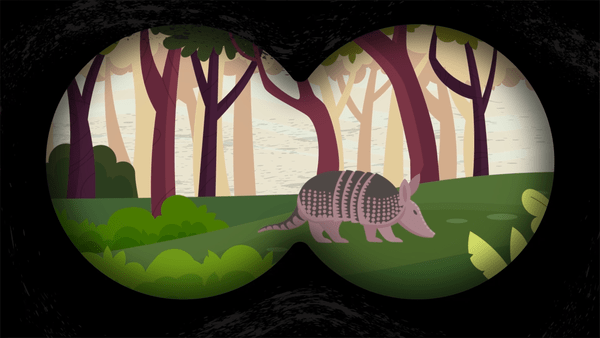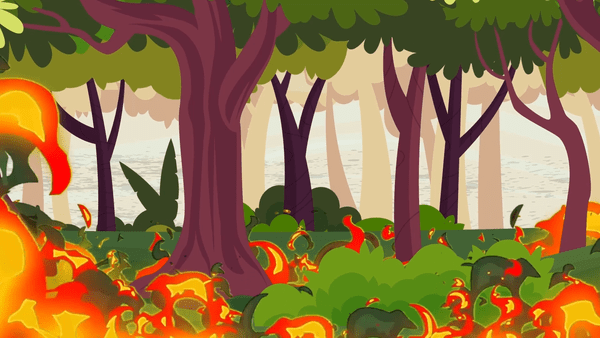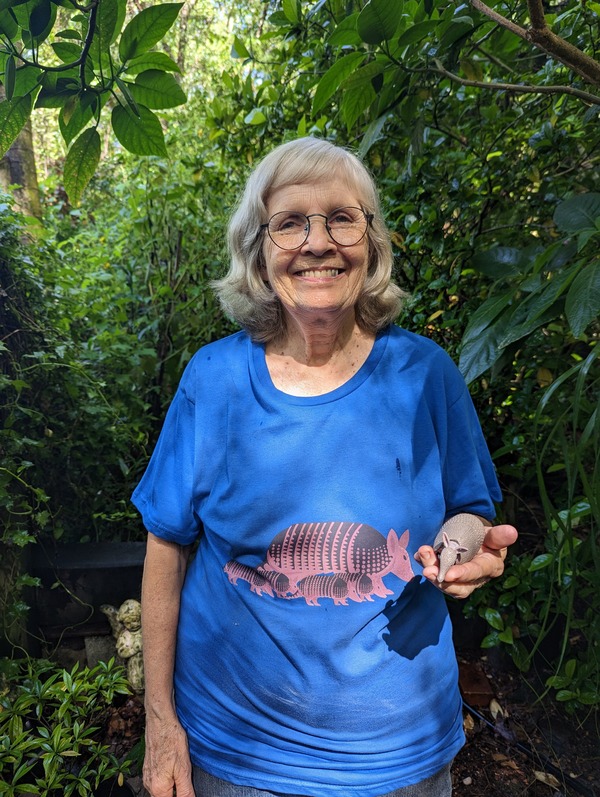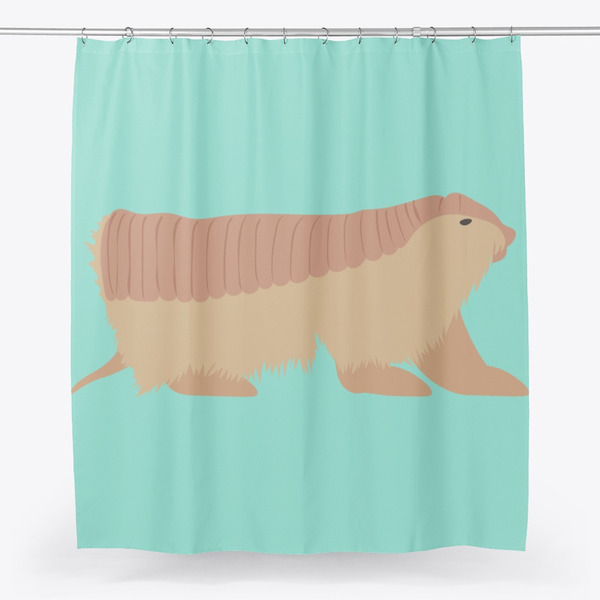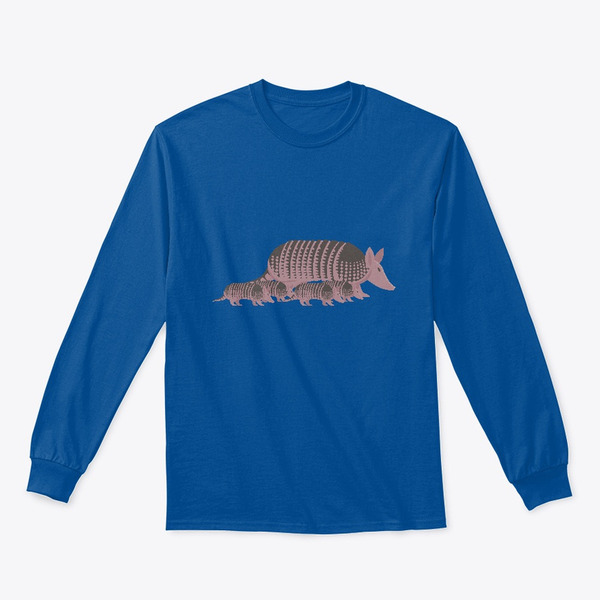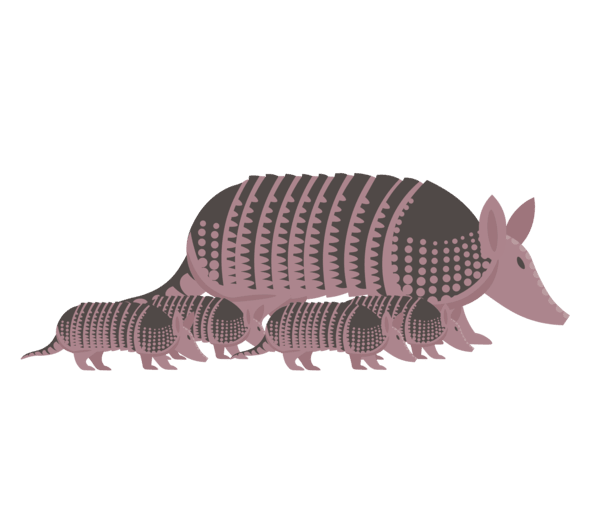
Nine-banded armadillo
Dasypus novemcinctus
Reproduction: Four genetically identical offspring are born in spring. (March-April in the northern hemisphere)
Weight: 3–6 kg
Diet: Generalist insectivore that primarily eats beetles (adults and larvae), ants, and termites. They can also eat small vertebrates, fruits, worms, bird eggs, and turtle eggs.
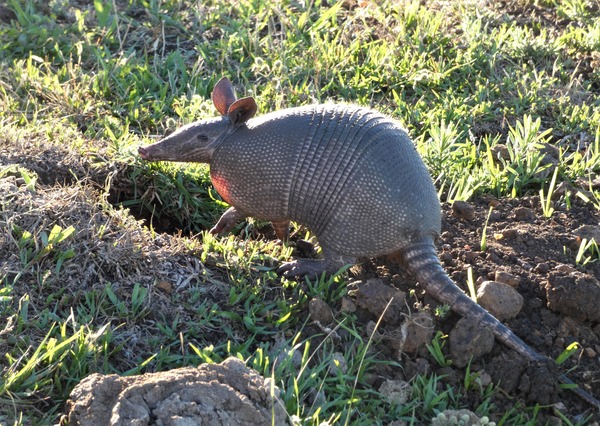
Common Names
English – Nine-banded Armadillo, Common Long-nosed Armadillo
Spanish – Tatú, Tatú Negro, Mulita Grande, Cachicamo, Montañero, Cusuco, Carachupa, Tochi, Gurre
German – Neunbinden-Gürteltier
Portuguese – Tatu-Galinha, Tatu-Preto, Tatu-de-Nove-Cintas
French – Tatou à Neuf Bandes
How to Identify:
Carapace Tan or pale yellow on the sides of the body, which is generally grey Moveable bands 7-11 Ears 2.5–5.7 cm, proportionally long Tail 26–45 cm
IUCN Red List
Species are classified into one of nine Red List Categories: Extinct, Extinct in the Wild, Critically Endangered, Endangered, Vulnerable, Near Threatened, Least Concern, Data Deficient and Not Evaluated. Vulnerable, Endangered and Critically Endangered species are considered to be threatened with extinction.

Nine-banded armadillo Facts
- In spite of its common name, it can have 7–11 bands but the most common number of bands is 9
- Although it is a well-known inhabitant of the southern US, the nine-banded armadillo was first reported in the US, specifically in Texas, only in 1849.
- Became the official State Small Mammal of Texas in 1995
- The reason: “is a hardy, pioneering creature that chose to begin migrating here at about the time that Texas became a state”, and it “possesses many remarkable and unique traits, some of which parallel the attributes that distinguish a true Texan, such as a deep respect and need for the land, the ability to change and adapt, and a fierce undying love for freedom”.
- Always gives birth to four genetically identical offspring. Although they are genetically identical, they may differ slightly from one another in the number of osteoderms (bony plates). Littermates can also discriminate between their own scent and that of their siblings.
- After mating, the females of some species can delay pregnancy when conditions will be better for her offspring, like when there will be more food available. Under stressful conditions, the offspring can be born more than two years after mating occurred!
- Can jump straight up in the air when alarmed
Habitat
- Savanna
- Shrubland
- Grassland
- Forest
 Population Trend
Population Trend
• Stable
 Threats
Threats
• No major threats
• Hunted as a nuisance in some areas and for food and handicrafts
Here are some ways YOU can help keep armadillos healthy and safe:
– It is best to observe them from a distance and in silence.
– Our pets could attack them. It is important to keep your dog on a leash when you go for a walk, or keep your pets at home in an enclosed and safe area. In addition, taking care of our pets also means spaying and neutering them so that they do not breed without control.
– Another way to help protect the areas where armadillos live is by not starting fires.
– Armadillos love to live in nature, keeping them as pets is not good for them. Keep in mind that they don’t like selfies either.
– If you find an injured armadillo, contact a wildlife hospital so they can help it.
– Deforestation is often caused to make more land for livestock. Eating less meat may help save our forests.
Dasypus novemcinctus can be found in the below countries.
Click to learn what other xenarthran species live there too!
Argentina
Belize
Bolivia
Brazil
Colombia
Costa Rica
Ecuador
El Salvador
French Guiana
Grenada
Guatemala
Guyana
Honduras
Mexico
Nicaragua
Panama
Paraguay
Peru
Suriname
Trinidad and Tobago
United States
Uruguay
Venezuela
Test your new knowledge!
Test your new armadillo expertise by visiting our armadillo word search, puzzles, coloring sheets and name games!
Check out this video to see how much you have learned!
The Anteater, Sloth, Armadillo Specialist Group has a store that directly helps xenarthran conservation!


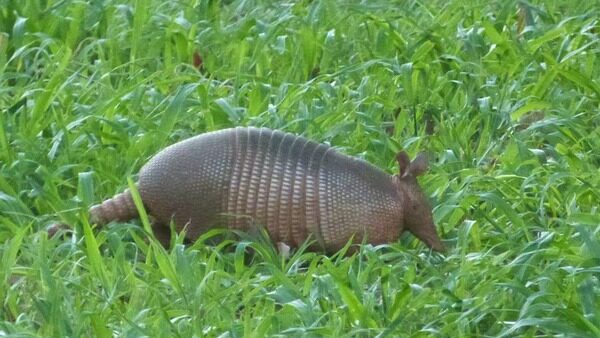
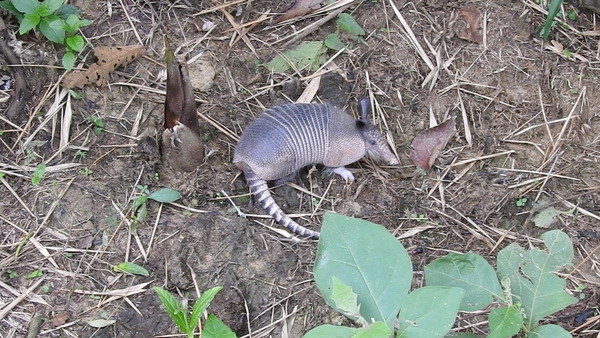
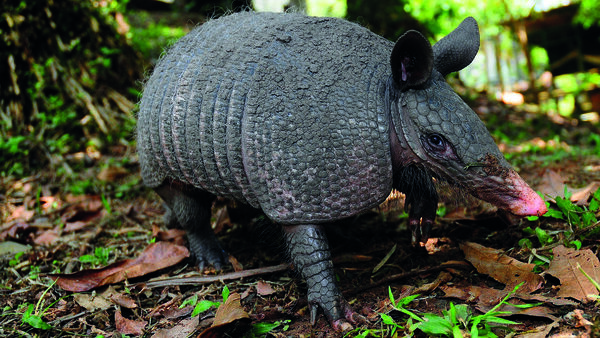
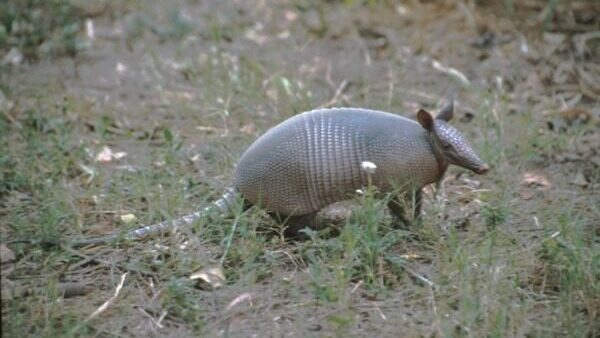


 Population Trend
Population Trend Threats
Threats
